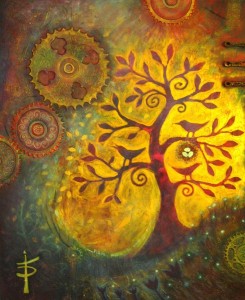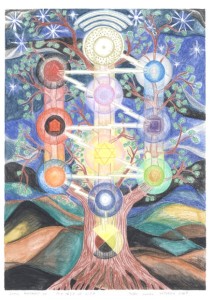 There are certain moments in each person’s life that have a compelling meaning, moments of personal significance where something happens that causes a paradigm shift in our minds, and our life is somehow never the same again. Sometimes these moments can be experiences of bliss and radiance, but equally (and perhaps more often) they can be moments where we are challenged, and experience difficulty or stress. Whether pleasant or unpleasant for us, our life’s compelling moments are moments of power for us, moments that when we recall or remember them we immediately connect to a powerful guiding force or emotion within us.
There are certain moments in each person’s life that have a compelling meaning, moments of personal significance where something happens that causes a paradigm shift in our minds, and our life is somehow never the same again. Sometimes these moments can be experiences of bliss and radiance, but equally (and perhaps more often) they can be moments where we are challenged, and experience difficulty or stress. Whether pleasant or unpleasant for us, our life’s compelling moments are moments of power for us, moments that when we recall or remember them we immediately connect to a powerful guiding force or emotion within us.
To give an example of this, I can remember one of the moments when I understood very clearly that my life as a Buddhist Monk was going to change, that I would be moving back to lay life before too long.
The event happened in a coffee bar in Los Angeles. I was sitting with a long time teacher and mentor of mine. I had been a monk for about five years, but in the six months or so prior to that meeting I had been struggling with certain aspects of being an ordained monk, and with the direction that it was taking my life. Essentially I felt I had reached a learning threshold and did not know how to make progress to the next level, or at least the level beyond the challenges that I was facing.
So, I decided to try and talk to my mentor about these issues, which made me feel quite venerable, but nevertheless I persisted. During the course of my attempts to explain how I was feeling, I mentioned to my mentor that I had been talking to a life coach and getting some feedback from him on what I was experiencing. As soon as I mentioned this her (my mentor’s) manner immediately seemed to change. She asked me if this life coach had any connection to the Buddhist tradition that we belonged to. I replied that no, he did not, and that I had wanted to talk to someone outside of the tradition to get some objective feedback. My mentor responded that she did not think that it was good idea for me to have talked to anyone outside of our tradition, as the feedback would not be appropriate.
At this point in the conversation something ‘clicked’ in my mind. At that moment I realized that there was no way that my mentor or anyone else within the mainstream of my present spiritual group was ever going to recommend anything for my challenges other than do more of the same spiritual practices that I had already been doing for many years. I knew at that moment that my path had moved outside, or beyond what was going to be acceptable from their spiritually conservative point of view. I knew that this meant that I was going to have to leave my life as a monk, and as a teacher within that tradition. Within the space of a short conversation, and a short exchange within that conversation, the path of my life had changed irreversibly and I knew it. With this knowing came conflicting feelings, a sense of fear of the unknown, a sense of resentment toward my mentor and the narrow mindset she represented, a sense of being mis-understood. But within all the conflict and uncertainty I could also feel a shift in my sense of inner power. I knew that I was going to have to be more self reliant from now on than I had dared to be in the past. I knew that I could not look to my past teachers to show me the way forward in my life anymore. There was a new and deeply felt sense of personal empowerment.
It is this sense of personal empowerment that, when I remember that conversation in the Los Angeles coffee bar I immediately feel re-connected to. It was a compelling moment in my life that changed me forever, and has been fuelling my path of personal growth since.
What are your life’s compelling moments? The moments and events that, when you recall them cause you to reconnect to your deepest sense of inner empowerment, spiritual connection and transformation? They are worth remembering and re-connecting to on a regular basis!
Thanks for reading,
Yours in the spirit of a compelling life,
Toby
PS: Here are the meditation class details for February:
Tuesday February 8th: Charity Meditation: Welcoming in the Spring and Lunar New Year of the Rabbit at Sanctuary on the Hill
Tuesdays February 22nd and March 8th – Landscapes Of the Mind: Finding Inner Power and Balance In Your Life Through Meditation on Wild Nature And Landscape
© Toby Ouvry 2011. You are welcome to use this article, but you must seek Toby’s pemission first! Contact info@tobyouvry.com




